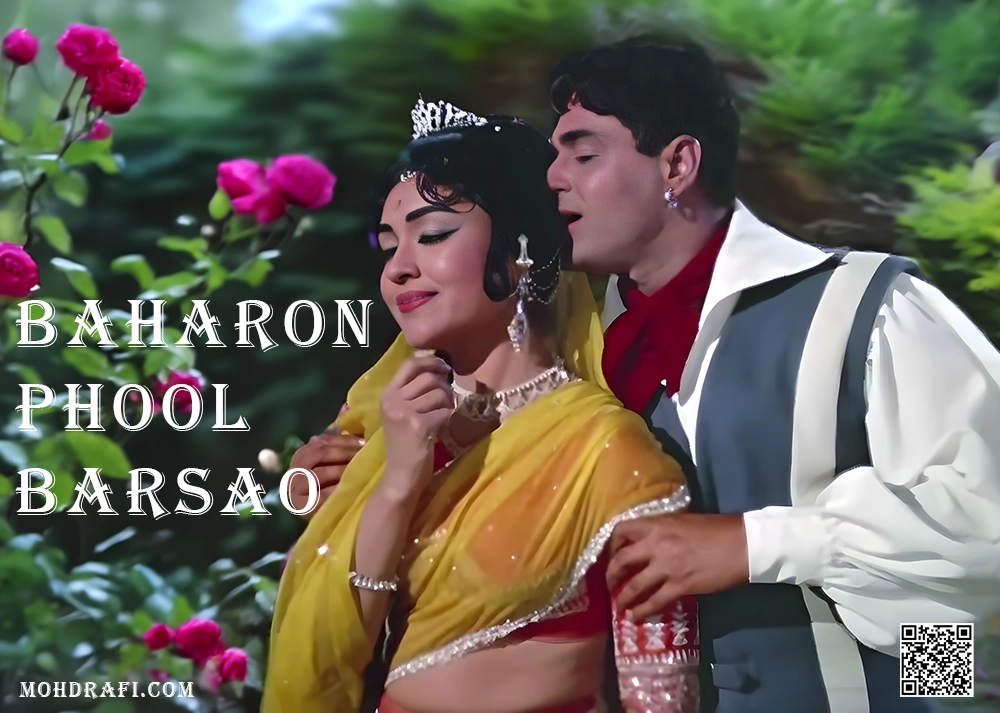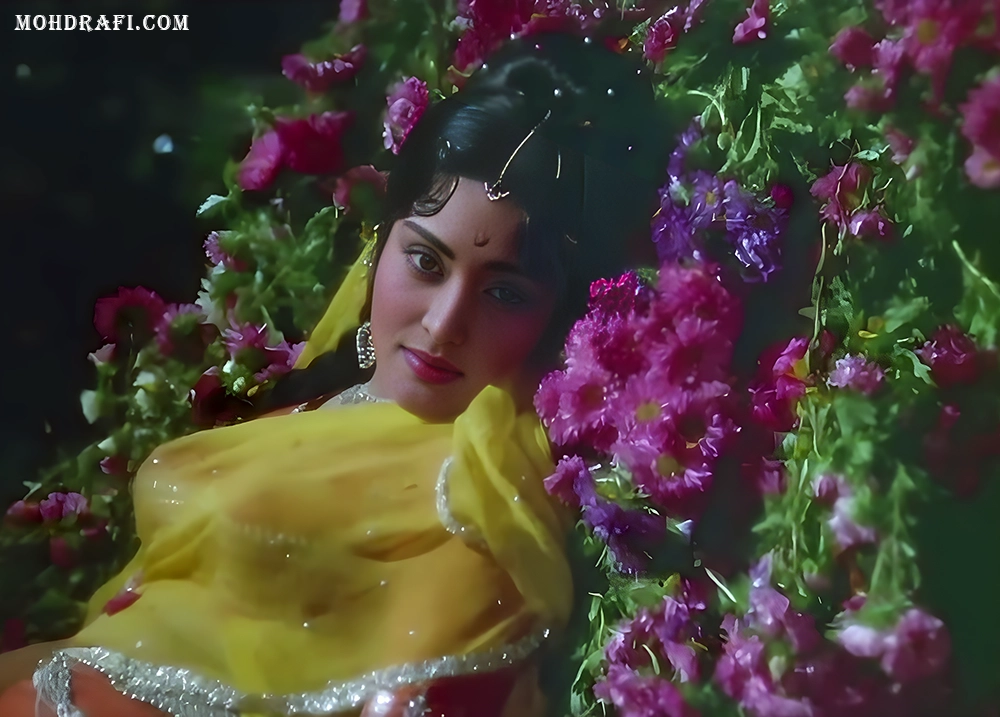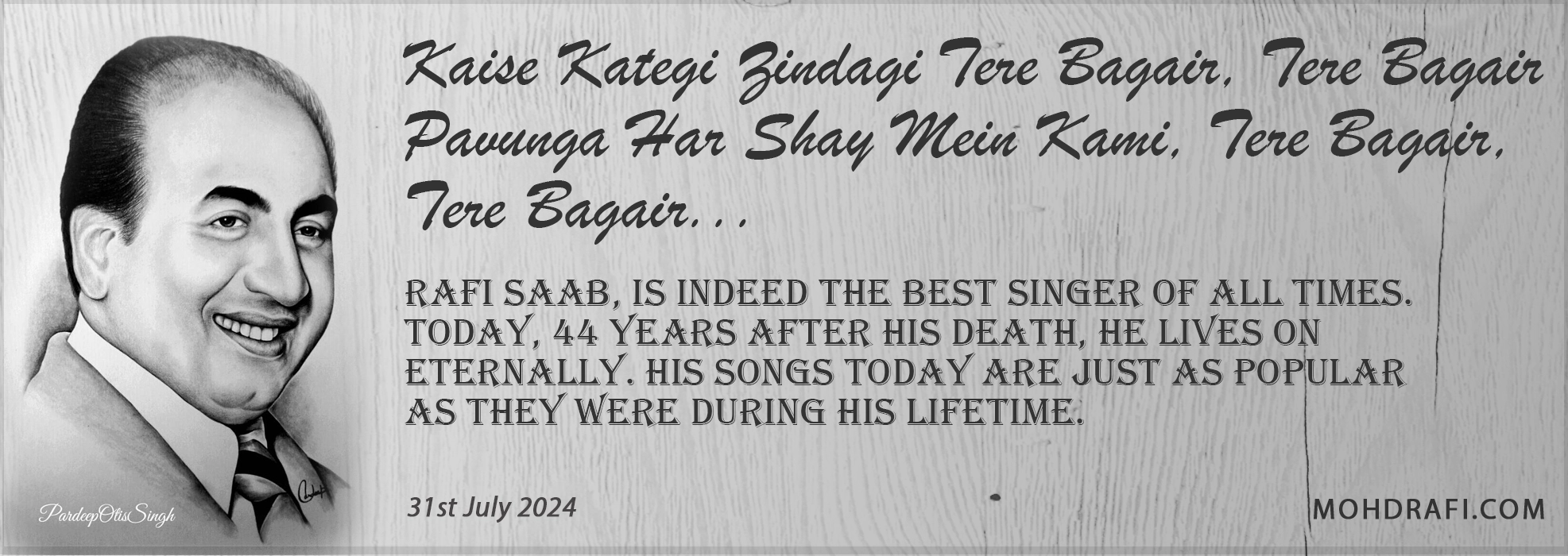Baharon Phool Barsao: A Tribute to the Magic of Mohammed Rafi
Celebrating “Baharon Phool Barsao,” this blog explores the magic of Mohammed Rafi’s voice, the poetic genius of Hasrat Jaipuri, and the timeless appeal of Suraj’s melodies.

“Baharon Phool Barsao,” a timeless melody from the 1966 film Suraj, is one of the most iconic songs ever sung by the legendary Mohammed Rafi. This song, composed by the duo Shankar Jaikishan and penned by the brilliant Hasrat Jaipuri, is a perfect blend of romance, emotion, and musical brilliance. As a die-hard fan of Mohammed Rafi, I am deeply moved by the way this song captures the essence of love and celebration.
The very first line, “Baharon Phool Barsao, Mera Mehboob Aaya Hai,” encapsulates a lover’s heartfelt joy, expressed with such purity and grace that it resonates deeply with every listener.
The magic of Rafi’s voice is such that it transcends time, making “Baharon Phool Barsao” as fresh and relevant today as it was when it was first released. His ability to convey emotions through subtle nuances, whether it’s the gentle longing in his voice or the exuberant joy, is unparalleled. This song isn’t just a celebration of a beloved’s arrival; it’s an ode to the sheer beauty of love itself.
The delicate interplay of Rafi’s melodious voice with the rich musical arrangement by Shankar Jaikishan creates an atmosphere of ethereal bliss, making it a favorite for romantics across generations. Mohammed Rafi’s soulful rendition of this song was so impactful that it earned him the prestigious Filmfare Award for Best Male Playback Singer, a testament to his unmatched talent and the timeless appeal of this classic melody.
Information on Mohammed Rafi himself. Known for his humility, Rafi was always deeply respectful of the lyricists and composers he worked with. When he first heard the lyrics of “Baharon Phool Barsao,” Rafi was so moved by the beauty of Hasrat Jaipuri’s words that he reportedly spent extra time rehearsing the song to ensure he could deliver the perfect emotion. Rafi believed that the song would be a major hit, and his prediction turned out to be true, as “Baharon Phool Barsao” became one of the most celebrated songs in Bollywood history.
One interesting information related to “Baharon Phool Barsao” involves the filming of the song. During the shooting of Suraj, director T. Prakash Rao wanted to create a grand visual spectacle that matched the grandeur of the song. The scene required a large number of flowers to be showered on the lead actors, Rajendra Kumar and Vyjayanthimala. However, when the shoot day arrived, the production team realized they hadn’t procured enough flowers to create the desired effect.
In a stroke of ingenuity, they decided to reuse the flowers. After each take, the crew would quickly gather the fallen petals, reset the scene, and shower the flowers again from above. This process was repeated multiple times to achieve the lush, flower-filled visuals that are seen in the final version of the song. Despite this logistical challenge, the end result was breathtaking, and the scene became iconic.
The Lyrics and Their Deep Emotional Resonance
The lyrics of “Baharon Phool Barsao” are beautifully crafted by Hasrat Jaipuri, who was known for his ability to convey profound emotions in simple words. Let’s dive into the lyrics and explore the depth and meaning behind each verse.
Baharon Phool Barsao, Mera Mehboob Aaya Hai,
Hawavon Raagni Gaavo, Mera Mehboob Aaya Hai
(बहारों फूल बरसाओ, मेरा महबूब आया है,
हवाओं रागिनी गाओ, मेरा महबूब आया है)
This opening verse is a grand declaration of love and happiness. Rajendra Kumar is calling upon nature itself—flowers, winds, and melodies—to join in the celebration of the beloved’s arrival. The imagery used here is powerful; it paints a picture of a world coming alive to honor this special moment. The repetition of “Mera Mehboob Aaya Hai” emphasizes the joy and anticipation of being reunited with a loved one.
O Laali Phool Ki Mehendi, Laga In Gore Haathon Mein,
Utar Aa Ay Ghata Kaajal, Laga In Pyari Ankhon Mein,
Sitaaron Maang Bhar Jaavo, Mera Mehboob Aaya Hai
(ओ लाली फूल की मेहंदी, लगा इन गोरे हाथों में,
उतर आ ऐ घटा काजल, लगा इन प्यारी आँखों में,
सितारों माँग भर जाओ, मेरा महबूब आया है)
In this verse, the Hasrat Jaipuri Sahab uses metaphorical language to describe the beauty and grace of the beloved. The “Laali Phool Ki Mehendi” symbolizes the adornment of the beloved’s hands, while “Ghatta Kaajal” refers to the natural beauty of the beloved’s eyes. The imagery of stars filling the beloved’s ‘maang‘ (parting of the hair) further enhances the divine nature of this love. The beloved is not just a person but an embodiment of everything beautiful and celestial.
Nazaron Har Taraf Ab Taan Do Ik Noor Ki Chadar,
Bada Sharmila Dilbar Hai, Chala Jaaye Na Sharmakar,
Zara Tum Dil Ko Behelavo, Mera Mehboob Aaya Hai
(नज़रों हर तरफ़ अब तान दो इक नूर की चादर,
बड़ा शर्मीला दिलबर है, चला जाये ना शर्माकर,
ज़रा तुम दिल को बहलाओ, मेरा महबूब आया है)
Here, Hasrat Jaipuri portrays the beloved as shy and modest, adding layers of tenderness to the song. The “Noor Ki Chadar” symbolizes the light of love that should cover the earth, creating an environment where the shy lover feels comfortable. The gentle plea to the heart to remain calm reveals the deep emotional connection and the overwhelming joy of the moment.
Sajaayi Hai, Jawaan Kaliyon Ne, Ab Yeh Sej Ulfat Ki,
Inhe Maalum Tha Aayegi, Ek Din Ruth Mohobbat Ki,
Fizaaon Rang Bikhrao, Mera Mehboob Aaya Hai
(सजाई है, जवाँ कलियों ने, अब ये सेज उल्फ़त की,
इन्हे मालूम था आयेगी, एक दिन रुत मोहब्बत की,
फिजाओं रंग बिखराओ, मेरा महबूब आया है)
In the final verse, the blooming buds have prepared the bed of love, anticipating the arrival of the season of love. This imagery reflects the purity and innocence of young love, where every element of nature conspires to celebrate this union. The request to the winds to spread colors in the air encapsulates the vibrant and joyous atmosphere that the beloved’s arrival brings.
The Maestro Behind the Words: Hasrat Jaipuri
Hasrat Jaipuri was a master of weaving emotions into words. His partnership with Shankar Jaikishan gave us some of the most memorable songs of Hindi cinema. Apart from “Baharon Phool Barsao,” Hasrat Jaipuri penned several other classics like “Pehele Mile The Sapnon Mein” from Zindagi (1964) and “Janam Janam Kaa Saath Hai” from Tumse Acha Kaun Hai (1969), both immortalized by Rafi’s voice. His lyrics have always carried a deep sense of emotion, whether it’s the pain of separation or the ecstasy of love.
Shankar Jaikishan: The Musical Magicians
The music for “Baharon Phool Barsao” was composed by Shankar Jaikishan, a duo known for their versatility and innovation. Their compositions ranged from classical ragas to peppy numbers, and they had a unique ability to bring out the best in their singers. Other Rafi classics composed by them include “Ajahuna Aaye Balama” from Sanj Aur Savera (1964) and “Dekha Hai Teri Aankhon Mein” from Pyar Hi Pyar (1969). Shankar Jaikishan’s music was always in perfect harmony with the lyrics, creating songs that are timeless.
Rajendra Kumar and Vyjayanthimala: The Stars of Suraj
Rajendra Kumar, often referred to as ‘Jubilee Kumar’ due to the success of his films, was the leading man in Suraj, opposite the graceful Vyjayanthimala.

The chemistry between the two was palpable, and their on-screen pairing added a visual charm to the musical brilliance of “Baharon Phool Barsao.” Rajendra Kumar’s romantic roles were complemented perfectly by Rafi’s voice in many films, making them an unforgettable duo in the history of Hindi cinema.
The Movie Suraj: A Cinematic Gem
Suraj was a blockbuster of its time, known for its lavish sets, engaging storyline, and unforgettable music. The film was a significant milestone in Rajendra Kumar’s career and cemented his position as a leading actor of the 1960s. The story, rich with royal drama and romance, provided the perfect backdrop for songs like “Baharon Phool Barsao“, “Chehere Pe Giri Zulphen“, “Itna Hai Tumse Pyar Mujeh“, “Kaise Samajhavun“, which remain etched in the memories of Bollywood music lovers.
Film: Suraj
Year: 1966
Singer: Mohammed Rafi
Lyrics: Hasrat Jaipuri
Music: Shankar Jaikishan
Actors: Rajendra Kumar, Vyjayanthimala

Post your Comment on Facebook